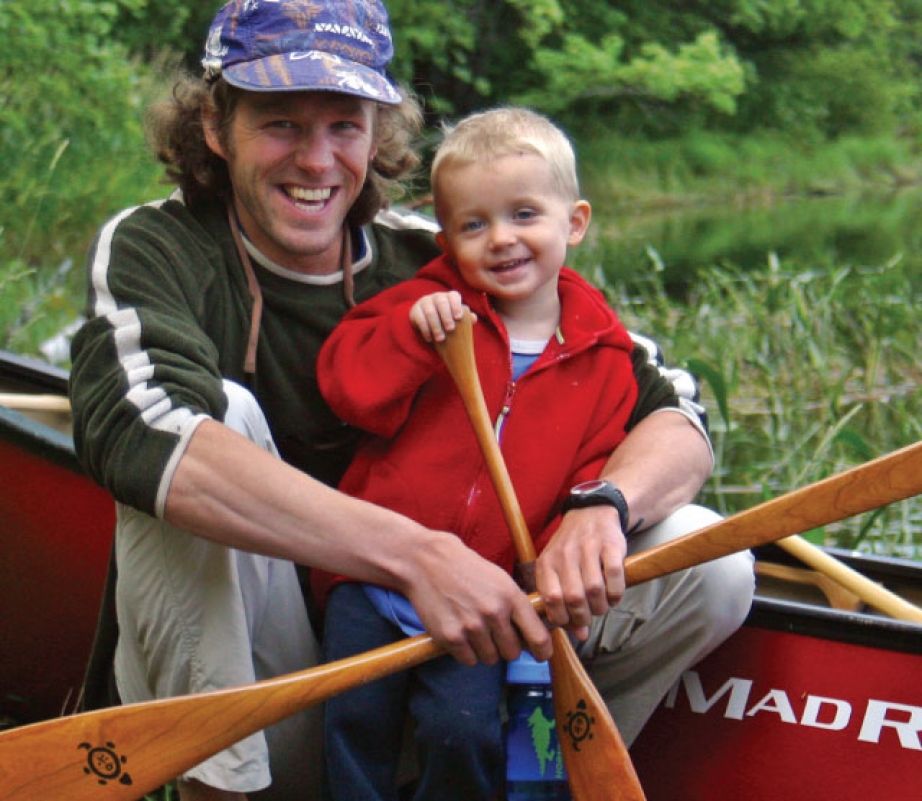As parents we walk the tightrope, balancing potential risks and benefits all the time. If I let my daughter stick a screwdriver in the electrical socket, the benefit of improving fine motor control would be zapped by the risk of being electrocuted. Whereas falling off a bicycle on a soft lawn is worth the risk of a stained knee for the benefits of learning to balance and enjoying childhood freedom. As parents we make these kinds of decisions all the time. Learning to cut paper versus losing a finger. Having fun fishing versus getting hooked in the scalp. Exercise and adventure from hiking versus getting lost or poison ivy.
In the world of outdoor recreation and education this is called risk management. My friend Matt Cruchet runs Direct Bearing Risk Management Consulting, a very successful business helping organizations manage risk in their adventure programs. Unfortunately, our society is quick to point fingers at the risks involved with outdoor activities, making educators and some parents scared to take kids outside—especially with the ever-looming threat of legal action. Matt works with schools, camps and organizations like the Girl Guides of Canada to help quantify the benefits, identify the hazards and minimize the risks involved in their outdoor programs.
As camping parents we know that summertime is perfect for being outside and being active with our kids. This Canada Day long weekend I took my two-year-old son Dougie on our first father-son whitewater canoe trip. The reaction of other canoeists fell into two camps: one group, “I wish I’d started paddling that young”; and the other group, “What in God’s name do you think you’re doing with a baby in the rapids?” One couple actually paddled over and asked me this…it turns out they are teachers.
My friend Matt uses a diagram to help his clients think about risk. One axis is the likelihood of something bad happening, and the other axis is the severity of the consequences. Mosquito bites, for example, are very likely but result in only minor bumps or itching; the chance of getting struck by lightning is quite low but the consequences are severe. The worst kinds of risk are the ones that are very likely to happen and have severe consequences. And in the first quadrant is where Dougie and I paddle the Madawaska River—the chances of us flipping are quite low, as are the consequences with warm, low water, helmets and PFDs.
In March, a Commons health committee report concluded that 26 per cent of Canadians between the ages of two and 17 are overweight or obese. Overfeeding and lack of exercise increase the risks of preventable life-threatening diseases such as diabetes and heart disease. Watching Dougie playing in the sand, scrambling over rocks, swimming in the shallow eddies and climbing into his sleeping bag at 7:30, I’m sure I’ve found the cure. For my family, the benefits of being outside and canoeing, hiking (see this issue’s hiking feature) and camping far outweigh the risks—so long, of course, that those risks are well managed.
By noon on our second day Dougie and I had caught up to the teachers. They were scouting Raquette Rapids, a 100-metre-long class II that flows over some shallow ledges and between two rock islands. I’ve run this rapid a hundred times. Dougie and I drifted into the current chatting about sitting still and pointing out rocks to avoid. I could feel glares of disapproval burning through the foam of my lifejacket as we floated past the teachers and down the last little chute into the lakewater pool. A perfect run.
A few minutes later, whistle blasts chirped to get our attention. Guess who was in the water? Their canoe was upside down and their gear was strewn around the rapid like a yard sale hit by a tornado. I’d normally have jumped up from our lunch spot on the rocks and helped them, but I couldn’t leave poor little Dougie on these dangerous rocks by himself. What kind of irresponsible parent would that make me? So I sat there spreading cream cheese on my “baby’s” bagel, wondering if they now think they should have started paddling when they were two.





